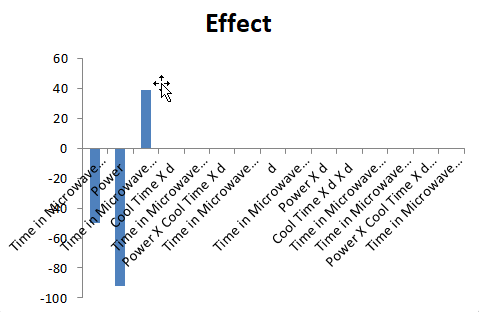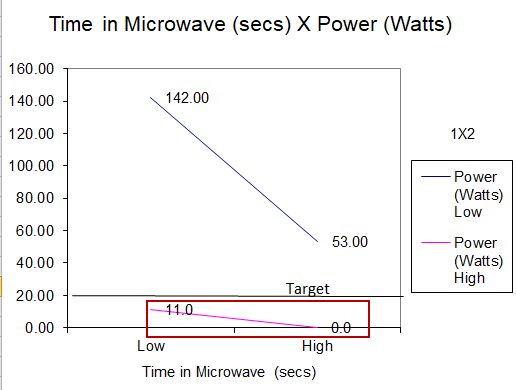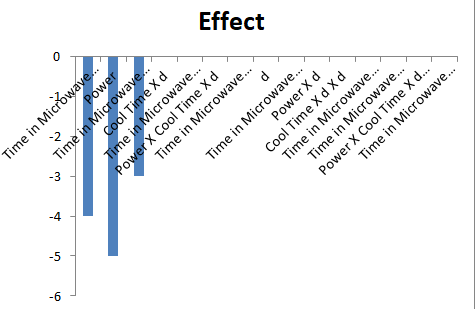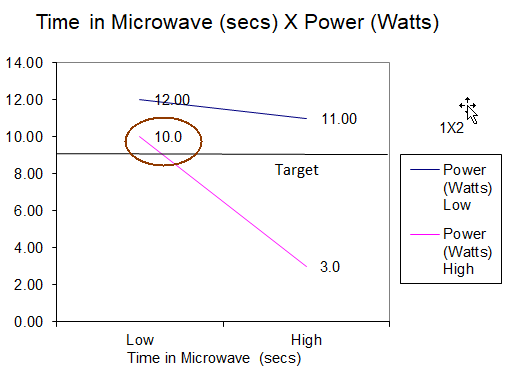Looking for a Design of Experiments Example?
Here's a DOE Case Study Using Microwave Popcorn
A customer sent me a link to a DOE video and asked: "Can you do this with QI Macros?"
Here's the DOE example using QI Macros:
A dad and his two sons wanted to find the best time and power settings to make the best tasting popcorn with the fewest unpopped kernels. To set up the experiment using a QI Macros Plackett-Burman design, they used the two factors (time, power) with two levels (Low and High):

They wanted to optimize taste and rated 1 (Low) to 5 (high) and summed the scores. And they wanted to reduce the number of unpopped kernels. They decided that a taste of 9 would be good enough and 20 or fewer unpopped kernels. So they popped four bags at the various settings, alternating high/low settings:

They counted the number of unpopped kernels in each trial. Looking at the effect, both time and power reduced unpopped kernels, but power had a greater effect than time:

Looking at the resulting chart, high power with low time got the unpopped kernels below the target of 20. Low power would not achieve the goal at either time setting:

Taste
They also rated the taste of each bag using a separate experiment template:

Time and power both had a negative effect on taste:

Looking at the graph, a low time combined with high power resulted in a taste of 10, which is above the goal of 9. Even a slight increase in time would potentially drop taste below 9:

Combining the taste result with the unpopped kernels result, the best option would be high power (800 watts) and low time (170).
Learn More ...
You don't have to be an expert.
Use QI Macros DOE template to mistake-proof your calculations.
Download a free 30-day trial. Get the DOE template now!
Other Tools Included in QI Macros Add-in for Excel

